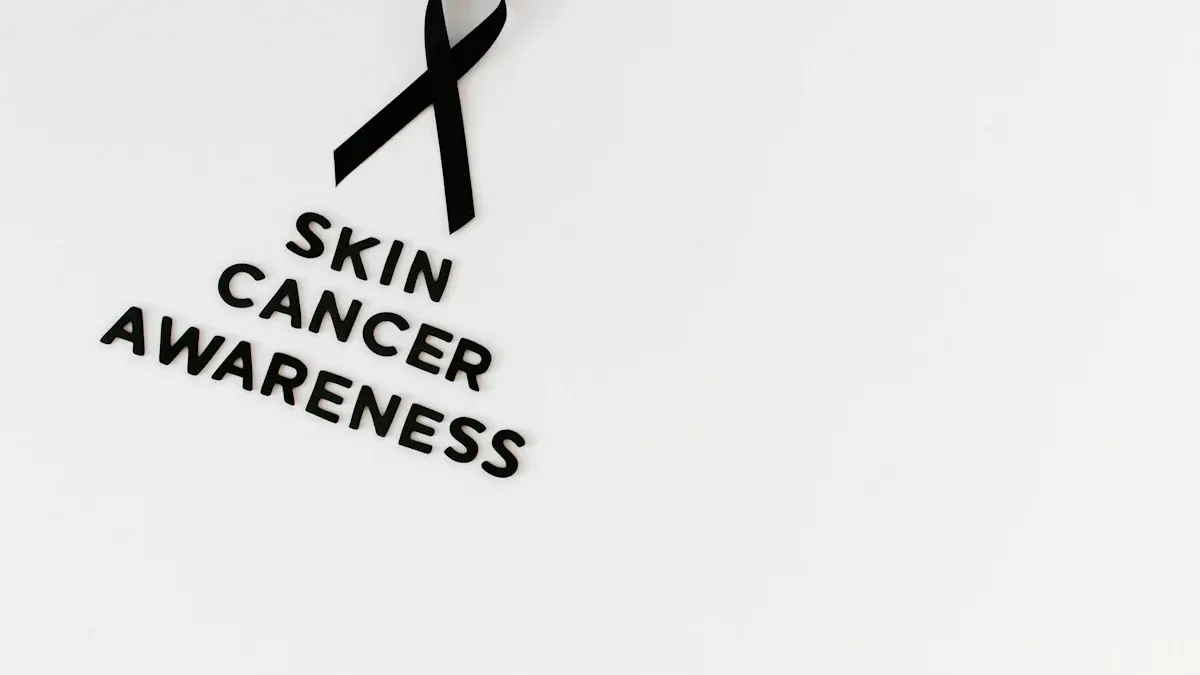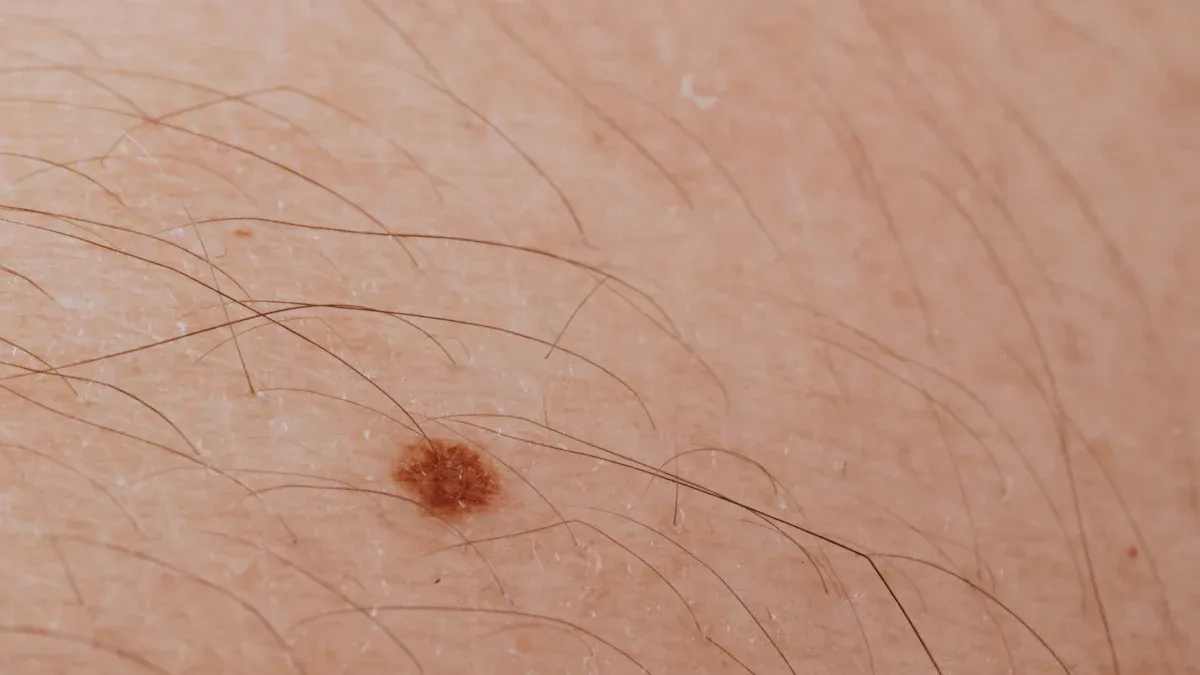What Is Melanoma and Why Is It Dangerous

Melanoma is a type of skin cancer that begins in melanocytes, the cells that produce melanin, the pigment responsible for your skin color. This cancer is dangerous because it grows quickly and can spread to other organs if not treated early. Early detection significantly improves survival rates. For instance, the five-year survival rate for localized melanoma exceeds 99%, while it drops to 35% when the cancer spreads to distant organs.
Over the past decade, global trends show a decline in melanoma mortality in many high-income countries, thanks to better prevention and early diagnosis. However, incidence rates continue to rise, especially among women. In Australia, mortality has decreased by up to 50%, reflecting the success of sun protection campaigns.
Taking preventive measures, such as protecting your skin from UV exposure and performing regular skin checks, can reduce your risk of developing melanoma.
Key Takeaways
Melanoma is a serious skin cancer that spreads fast. Finding it early is key, with survival rates over 99% if caught before spreading.
Protect your skin from the sun by using sunscreen with SPF 30 or higher. Put it on again every two hours. Wear hats and long sleeves to stay safe.
Check your skin often for changes. Use the ABCDE rule: A for uneven shapes, B for jagged edges, C for different colors, D for spots bigger than 6mm, and E for changes over time.
Stay away from tanning beds. They can harm your skin and cause cancer, even if used rarely.
Eat healthy foods and get your skin checked often. These habits can help prevent melanoma or catch it early if it starts.
What Is Melanoma?

Definition of Melanoma
Melanoma is a type of skin cancer that develops in melanocytes, the cells responsible for producing melanin. Melanin gives your skin its color and helps protect it from harmful ultraviolet (UV) rays. When melanocytes undergo genetic mutations, they can grow uncontrollably, forming melanoma. This cancer can appear anywhere on your skin, even in areas not exposed to the sun.
How Melanoma Develops
Role of Melanocytes in Skin
Melanocytes play a crucial role in protecting your skin from UV damage. These cells produce melanin, which absorbs and disperses UV radiation. However, when melanocytes experience damage from UV rays or other factors, they may mutate and form cancerous cells.
Factors That Trigger Melanoma, Including UV Exposure and Genetics
Several factors can increase your risk of developing melanoma:
UV Exposure: Prolonged exposure to sunlight or tanning beds damages melanocytes, increasing the likelihood of mutations.
Genetics: Mutations in specific genes, such as the BRAF gene, are linked to melanoma. About 50% of patients with advanced melanoma have a mutation in this gene.
Ethnicity and Skin Type: People with lighter skin tones face a higher risk of melanoma. However, individuals of color are more likely to develop acral lentiginous melanoma, a rare type that often appears on the palms, soles, or under nails.
Early Signs and Symptoms of Melanoma
ABCDE Rule for Identifying Melanoma
The ABCDE rule helps you recognize potential melanoma:
A: Asymmetry – One half of the mole doesn’t match the other.
B: Border – Edges are irregular or blurred.
C: Color – Uneven shades of black, brown, or other colors.
D: Diameter – Larger than 6mm (about the size of a pencil eraser).
E: Evolving – Changes in size, shape, or color over time.
Finding | Description |
|---|---|
Association | A higher number of ABCDE signs increases suspicion of melanoma. |
Limitation | The ABCDE rule may miss early lesions, especially in situ melanoma cases. |
Other Warning Signs, Such as Changes in Moles or Freckles
You should also watch for other changes in your skin. A mole that itches, bleeds, or develops a crust could indicate melanoma. Some melanomas don’t follow the ABCDE rule, so any unusual skin change warrants attention. Remember, early detection can save lives.
Types of Melanoma
Superficial Spreading Melanoma
Superficial spreading melanoma is the most common type of melanoma. It accounts for about 70% of all cases. This type often begins as a flat or slightly raised patch on your skin. It may have irregular edges and multiple colors, such as brown, black, or pink. You might notice it growing outward rather than downward into deeper layers of the skin. This growth pattern makes early detection possible, which improves treatment outcomes.
Superficial spreading melanoma typically appears on areas of your body that receive frequent sun exposure, like your back or legs. However, it can develop anywhere. If you spot a mole or patch that changes in size, shape, or color, consult a dermatologist promptly.
Nodular Melanoma
Nodular melanoma grows faster than other types. It often appears as a raised bump on your skin. Unlike superficial spreading melanoma, this type tends to grow downward into deeper layers of tissue. You might notice it as a firm, dome-shaped lesion that can be black, blue, red, or even skin-colored.
This type of melanoma is more aggressive and can spread quickly to other parts of your body. It often develops on areas exposed to the sun, such as your head, neck, or chest. If you see a new lump or bump that looks unusual, don’t ignore it. Early diagnosis is critical for effective treatment.
Lentigo Maligna Melanoma
Lentigo maligna melanoma usually develops in older adults. It often starts as a flat, dark patch on sun-damaged skin, such as your face, arms, or neck. This type grows slowly over several years, remaining in the top layer of your skin before it invades deeper tissues.
You might notice it as a large, unevenly colored spot with shades of brown or black. While it progresses more slowly than nodular melanoma, it still poses a serious risk if left untreated. Regular skin checks can help you catch it early.
Tip: Pay attention to any new or changing spots on your skin, especially if they appear in sun-exposed areas. Early detection saves lives.
Acral Lentiginous Melanoma
Acral lentiginous melanoma is a rare type of melanoma that often appears on the palms, soles, or under the nails. Unlike other forms of melanoma, it is not directly linked to sun exposure. This type is more common in individuals with darker skin tones, though it can affect anyone. You might notice it as a dark streak under a nail or a patch of discoloration on the skin of your hands or feet.
Diagnosing acral lentiginous melanoma can be challenging, especially in darker-skinned individuals. Several factors contribute to this difficulty:
Many people in this group are unaware of their risk for skin cancer.
Self-examinations of areas like the palms and soles are often neglected.
Symptoms may resemble harmless conditions, such as bruises or fungal infections.
Standard diagnostic criteria for melanoma may not apply to this type.
If you see unusual changes in these areas, consult a dermatologist promptly. Early detection is crucial for effective treatment.
Rare Types of Melanoma, Including Mucosal Melanoma
Mucosal melanoma is a rare and aggressive form of melanoma. It develops in mucous membranes, such as those lining your mouth, nose, or genital areas. This type is difficult to detect because it occurs in areas not easily visible. Symptoms often mimic other conditions, leading to delayed diagnosis.
The prognosis for mucosal melanoma depends on factors like tumor size, location, and stage at diagnosis. Early detection improves outcomes, but the five-year survival rate varies widely. Some patients achieve long-term remission with timely treatment. If you experience persistent symptoms in mucous membranes, such as unexplained bleeding or sores, seek medical advice immediately.
Note: Rare melanomas like mucosal melanoma highlight the importance of paying attention to unusual symptoms, even in less obvious areas of your body.
Why Is Melanoma Dangerous?
Ability to Spread (Metastasis)
How Melanoma Spreads to Other Organs
Melanoma becomes dangerous when it spreads, or metastasizes, to other parts of your body. This process begins when cancer cells break away from the original tumor. These cells travel through your bloodstream or lymphatic system to reach distant organs. Once there, they form new tumors, making treatment more challenging. Unlike some cancers that remain localized, melanoma has a high potential to spread quickly, even in its early stages.
Common Sites of Metastasis, Such as Lungs, Liver, and Brain
Melanoma often spreads to vital organs, including your lungs, liver, and brain. When it reaches these areas, it can disrupt their normal functions. For example, melanoma in the lungs may cause breathing difficulties, while brain metastases can lead to headaches, seizures, or neurological issues. The liver, responsible for filtering toxins, may struggle to perform its role if affected by melanoma. These complications highlight why early detection and treatment are critical.
Impact on Vital Organs
When melanoma spreads to vital organs, it can severely impact your health. Tumors in these organs interfere with their ability to function properly. For instance, brain metastases may affect your memory, coordination, or speech. Liver involvement can lead to jaundice or abdominal pain. These effects not only reduce your quality of life but also make treatment more complex. Addressing melanoma before it spreads is essential to prevent these life-threatening complications.
Challenges in Treating Advanced Melanoma
Treating advanced melanoma poses significant challenges. Once the cancer spreads, it becomes harder to target and eliminate. However, recent advancements in treatment offer hope. Tumor-Infiltrating Lymphocyte (TIL) therapy, approved in 2024, uses your immune cells to fight melanoma. Tebentafusp, a drug for metastatic uveal melanoma, helps your immune system recognize and attack cancer cells. Combination immunotherapy, such as nivolumab and relatlimab, has shown promise in delaying disease progression. These therapies represent a shift toward personalized medicine, improving outcomes for some patients. Despite these advancements, early detection remains your best defense against melanoma.
How Does Melanoma Differ From Other Skin Cancers?
Comparison With Basal Cell Carcinoma (BCC)
Basal cell carcinoma (BCC) is the most common type of skin cancer. Unlike melanoma, BCC grows slowly and rarely spreads to other parts of the body. It often appears as a pearly bump or a flat, flesh-colored lesion on sun-exposed areas like your face or neck. While BCC can cause significant damage to surrounding tissues, it is less life-threatening than melanoma. You should still treat BCC promptly to prevent complications, but its behavior is far less aggressive compared to melanoma.
Comparison With Squamous Cell Carcinoma (SCC)
Squamous cell carcinoma (SCC) is another common skin cancer. It typically develops on areas exposed to the sun, such as your hands, ears, or lips. SCC often appears as a scaly patch, a red sore, or a wart-like growth. Unlike melanoma, SCC has a moderate risk of spreading to other parts of your body. However, it is more aggressive than BCC. Early treatment can prevent SCC from becoming more serious. Melanoma, in contrast, has a much higher potential to metastasize, even in its early stages.
Unique Risks and Aggressiveness of Melanoma
Melanoma stands out due to its unique risks and aggressive nature. It grows faster and spreads more readily than BCC or SCC. Several factors contribute to this aggressiveness:
Factor | Description |
|---|---|
Your body may fail to repair DNA damage caused by UV exposure, increasing the risk of melanoma. | |
Breakdown of Immune Protection | Substances that suppress immune cells, like T lymphocytes, allow melanoma to progress unchecked. |
Defective Apoptosis | Apoptosis, the process that removes damaged cells, may fail. This allows damaged cells to survive and multiply, making melanoma more aggressive than other skin cancers. |
These factors make melanoma more dangerous and harder to treat if not caught early. Regular skin checks and prompt attention to unusual changes can help you detect melanoma before it becomes life-threatening.
Reducing the Risks of Melanoma

Importance of Sun Protection
Using Sunscreen and Protective Clothing
Protecting your skin from harmful UV rays is one of the most effective ways to reduce your risk of melanoma. Sunscreen plays a vital role in this effort. Broad-spectrum sunscreens shield your skin from both UVA and UVB rays, which are known to cause skin cancer. To maximize protection:
Choose a sunscreen labeled "broad spectrum" with an SPF of at least 30.
Reapply sunscreen every two hours, especially after swimming or sweating.
Use water-resistant sunscreen if you plan to engage in water activities.
While sunscreen helps, it does not guarantee complete protection. Wearing protective clothing, such as wide-brimmed hats and long-sleeved shirts, adds an extra layer of defense. Avoid prolonged sun exposure during peak hours (10 a.m. to 4 p.m.) to further minimize UV damage.
Avoiding Tanning Beds
Tanning beds expose your skin to concentrated UV radiation, significantly increasing your risk of melanoma. Many people mistakenly believe tanning beds are safer than natural sunlight. However, studies show that even occasional use can damage your skin and trigger cancerous changes in melanocytes. Avoid tanning beds entirely to protect your skin.
Regular Skin Checks
Self-Examinations
Performing regular self-examinations helps you detect melanoma early. Look for new or changing moles, freckles, or spots on your skin. Use the ABCDE rule to identify suspicious changes. Pay close attention to areas that are hard to see, such as your back or scalp. A mirror or a trusted friend can assist you in checking these spots.
Professional Skin Screenings
Dermatologists recommend professional skin screenings for individuals at high risk of melanoma. These include people with a family history of melanoma, multiple atypical moles, or significant sun exposure. Regular screenings, conducted every 3 to 12 months, can catch melanoma in its early stages. Early detection increases the chances of successful treatment and reduces the need for aggressive interventions.
Lifestyle Changes to Lower Risk
Adopting healthy habits can lower your risk of melanoma. Incorporate sun protection into your daily routine, even on cloudy days. Stay in the shade whenever possible and avoid tanning altogether. A balanced diet rich in antioxidants may also support skin health. By making these changes, you can take proactive steps to protect yourself from melanoma.
Melanoma is a dangerous skin cancer due to its rapid growth and ability to spread. Early detection significantly improves survival rates, with localized cases having a five-year survival rate of over 99%. You can reduce your risk by taking proactive steps:
Avoid tanning beds and sunburns entirely.
Conduct monthly self-skin examinations to catch changes early.
Remember, extended UV exposure and genetic factors increase your risk. Protecting your skin and staying vigilant can save your life.
FAQ
What is the main cause of melanoma?
The primary cause of melanoma is UV radiation from sunlight or tanning beds. UV rays damage your skin cells, leading to mutations in melanocytes. These mutations can trigger uncontrolled cell growth, forming melanoma. Protecting your skin from UV exposure reduces your risk significantly.
Can melanoma develop on areas not exposed to the sun?
Yes, melanoma can appear on areas not exposed to sunlight, such as the soles of your feet, palms, or under your nails. This type, called acral lentiginous melanoma, is rare but more common in individuals with darker skin tones. Regular skin checks help detect it early.
How can you tell if a mole is cancerous?
Use the ABCDE rule:
A: Asymmetry
B: Border irregularity
C: Color variation
D: Diameter over 6mm
E: Evolving size, shape, or color
Tip: Any mole that changes, itches, or bleeds should be examined by a dermatologist.
Is melanoma treatable if caught early?
Yes, early-stage melanoma is highly treatable. When detected before it spreads, the five-year survival rate exceeds 99%. Regular skin checks and prompt medical attention for suspicious changes improve your chances of successful treatment.
Who is at higher risk of developing melanoma?
You are at higher risk if you have:
Fair skin or light hair
A history of sunburns
A family history of melanoma
Numerous moles or atypical moles
Note: Even individuals with darker skin can develop melanoma, especially on less exposed areas.
---
ℹ️ Explore more: Read our Comprehensive Guide to All Known Cancer Types for symptoms, causes, and treatments.
See Also
Recognizing Symptoms And Treatments For Conjunctival Melanoma
Understanding Insulinoma: Its Importance And Key Facts
Identifying Symptoms Of Leiomyosarcoma: A Comprehensive Guide
